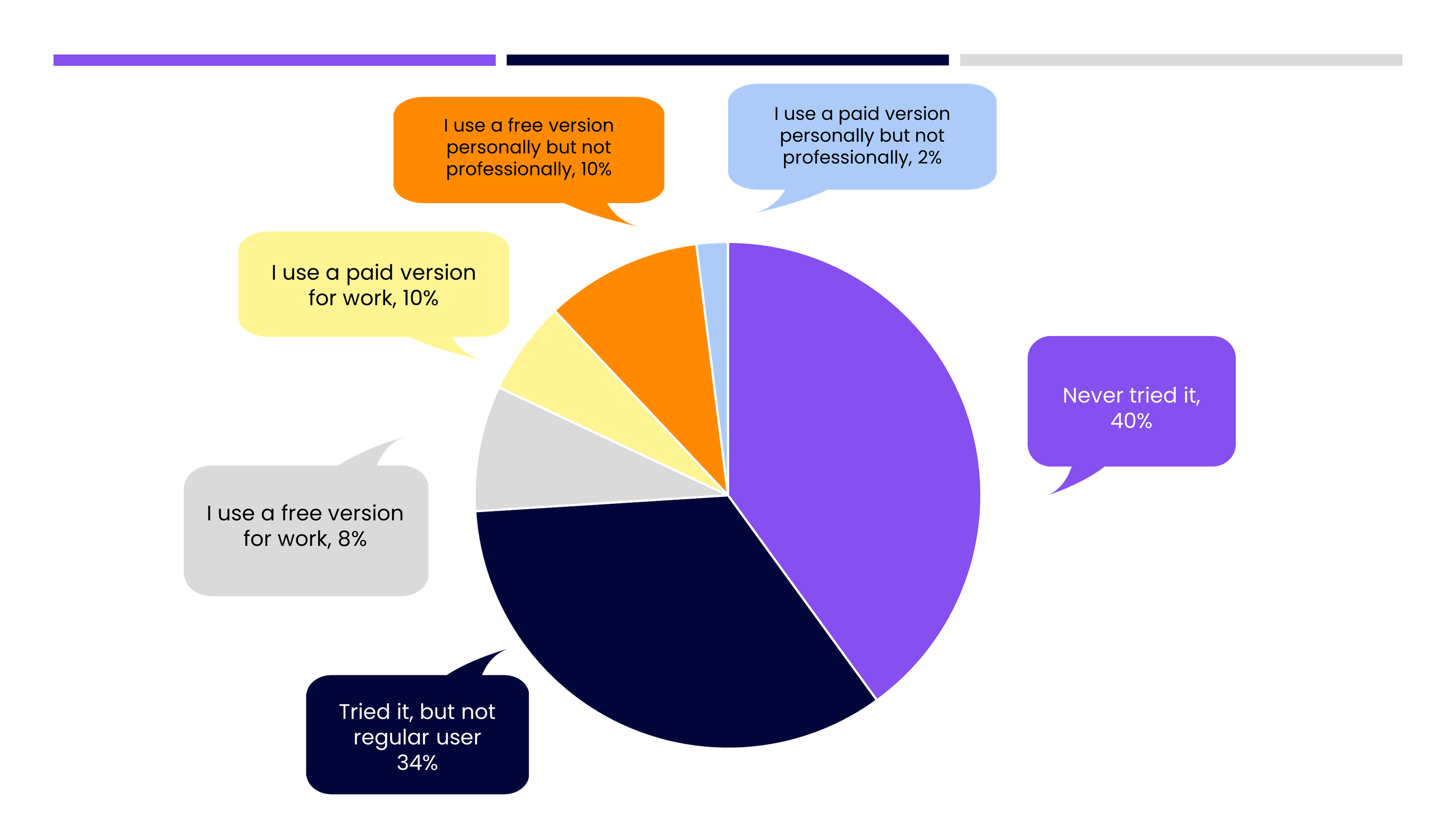The Complex Truth About AI and Language Professionals
The tech world is brimming with excitement about AI. The technology is fascinating and amazing and has incredible potential. Early adopters can’t stop talking about it. At Intelligent Editing, we’ve even produced our own AI product, Draftsmith.
But what does the average language professional think?
We surveyed 500 language professionals from around the world. At the moment, the number of people who have little or no use for AI vastly outweigh the early adopters. Fear and cynicism outweigh the optimists.
Those findings can be read two ways. The growth from almost nothing 18 months ago is extraordinary. If the early adopters are right, the rest of the profession should be paying more attention. At the same time, most people are not there yet. Anyone who wants to share an interest in AI should consider more carefully how non-adopters think about the technology.
Here are some initial findings from the survey.
Introduction
The survey was carried out in January 2024. Survey respondents were mostly drawn from our community of PerfectIt users. That includes editors, translators, medical writers, proposal writers, lawyers and more. However, it’s not a representative sample. Three quarters of respondents work independently/freelance. More than 80% of respondents use PerfectIt.
PerfectIt users come primarily from English speaking countries. The USA, UK, Canada and Australia make up the majority of users. The survey overrepresents people who are adept with language technology but choose a tool like PerfectIt that does not include AI.
The fear is real
Some 26% of respondents were concerned that they might lose their job as a result of AI. Moreover, 44% of respondents were concerned about other people losing their jobs. Only 13% of respondents had no concerns at all.
Figure 1: Do you have any concerns about AI?
Language professionals are united when it comes to copyright. More than three quarters of respondents said they were worried about abuse of copyright by major AI companies. It’s worth understanding that this is “a completely new problem that we’ve been arguing about for 500 years”.
The majority are not using AI for work yet
Our survey follows seven months after Deloitte’s Digital Consumer Trends which measures wider public perception. Deloitte found 8% of respondents report having used generative AI tools for work. We found that number among language professionals was 14%. This difference could be the result of the time passed since the Deloitte survey or it could be because the technology is more relevant to language professionals.
Figure 2: How would you describe your use of generative AI such as ChatGPT, Bard and Copilot?
Curious but cynical
Most survey respondents were interested but haven’t found much professional use so far. That’s not surprising with a new technology. So the data can be read two ways. We can focus on the majority who aren’t finding much, or we can look at the pace of change. Compared to where things were 18 months ago, this growth is rapid.
Figure 3: What best describes your curiosity levels around AI?
No surprises but…
In one sense, we’d expect technological adoption to be high because generative AI is so relevant to the work of language professionals. At the same time, we’d expect it to be low because the skills of language professionals are so good. AI may be good for bringing low levels of language skill up to mediocre. But beating professionals at their own superpower is far harder.
Moreover, this is a new technology. It’s hard to build a clear picture from a snapshot. We don’t know whether we should be surprised by the numbers that have taken up the new technology or the majority who have not.
Our recommendations
The high levels of curiosity combined with low levels of take-up suggest some recommendations. Even if you’re not using the technology, it’s important to understand what’s coming and what’s out there. So we suggest language professionals take four quick steps:
Sign up for Mignon Fogarty’s (aka Grammar Girl) AI Sidequest. It’s a free newsletter from that will keep you continuously up to date on developments from the perspective of language professionals for just a few minutes per week.
Listen to Erin Servais on the Editor’s Half Hour Podcast. Erin runs courses on AI for editors. Whether you agree with her or not, it’s an important perspective that takes just 30 minutes to understand.
Join the Draftsmith mailing list to stay on top of all our latest AI news for language professionals (like this survey). Draftsmith is our AI product that’s designed to integrate AI technologies with Microsoft Word as seamlessly as possible for language professionals. It’s the first product we’ve produced since PerfectIt (which uses no AI). The newsletter is free here.
Technological change can be faster and slower than people recognize in the moment. Generative AI is just at the beginning. So even though most people may not be using it for work today does not mean the same will be true next year. If there’s one thing the survey clearly shows, at a moment like this, learning about what’s happening and staying on top of changes is important for every language professional.



